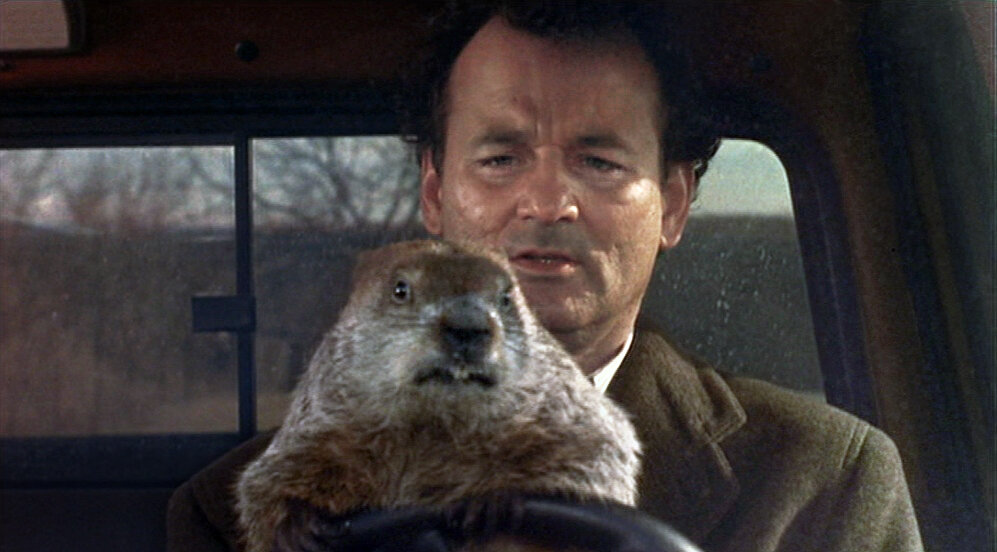Note: If you wish to receive, via e-mail, (1) my weekly newsletter or (2) daily copies of these posts, notify me at [email protected] and indicate which you would like. I promise not to share your e-mail address with anyone. To unsubscribe, send me a follow-up email.
Friday
Today being Groundhog Dog, with the length of winter determined by whether or not it sees its shadow, I imagine Punxsutawney Phil having a T.S. Eliot-style existential crisis. After all, when the speaker in The Waste Land sees his shadow, it reminds him of the passage of time and his eventual death:
What are the roots that clutch, what branches grow
Out of this stony rubbish? Son of man,
You cannot say, or guess, for you know only
A heap of broken images, where the sun beats,
And the dead tree gives no shelter, the cricket no relief,
And the dry stone no sound of water. Only
There is shadow under this red rock,
(Come in under the shadow of this red rock),
And I will show you something different from either
Your shadow at morning striding behind you
Or your shadow at evening rising to meet you;
I will show you fear in a handful of dust.
In this barren landscape, the speaker hopes for something to believe in but sees only a “heap of broken images.” He longs for regenerating water such as Jesus promised the Samaritan woman at the well but sees only drought-stricken trees, stony rubbish, and the sun beating relentlessly down. And then there is the shadow, which may stride confidently behind you in the morning but ominously rises up to meet you at the close of day.
“The shadow” also shows up in Eliot’s poem “The Hollow Men,” where it symbolizes a paralysis that falls between the idea and the reality, the motion and the act, the conception and the creation, the emotion and the response, the desire and the spasm, the potency and the existence, the essence and the descent. In other words, as hollow men we cannot redeem our empty lives with meaningful action.
Interestingly, in the wonderful Bill Murray movie Groundhog Day, weatherman Phil Connors is leading a Waste Land existence. His question to a man in a bar sums up both the plot and the theme of the film: “What would you do, if you were stuck in one place, and every day was exactly the same, and nothing you could say, and nothing you could do, mattered?”—to which the man replies, “That about sums it up for me.” Further on Connors says bitterly (this to the television audience watching him report on Punxsutawney Phil), “You want a prediction about the weather, you’re asking the wrong Phil. I’ll give you a winter prediction: It’s gonna be cold, it’s gonna be grey, and it’s gonna last you for the rest of your life.”
So if the groundhog sees its shadow tomorrow, will it think about the day that its dust will mingle with the dust of the earth and be plunged into existential despair? Or will it, like the Bill Murray character, eventually use this reminder of mortality to embrace that life it has been given and turn to poetry, music, art, community service, and love?
We have a choice in how we view six more weeks of winter. And life generally, when it comes down to it.
